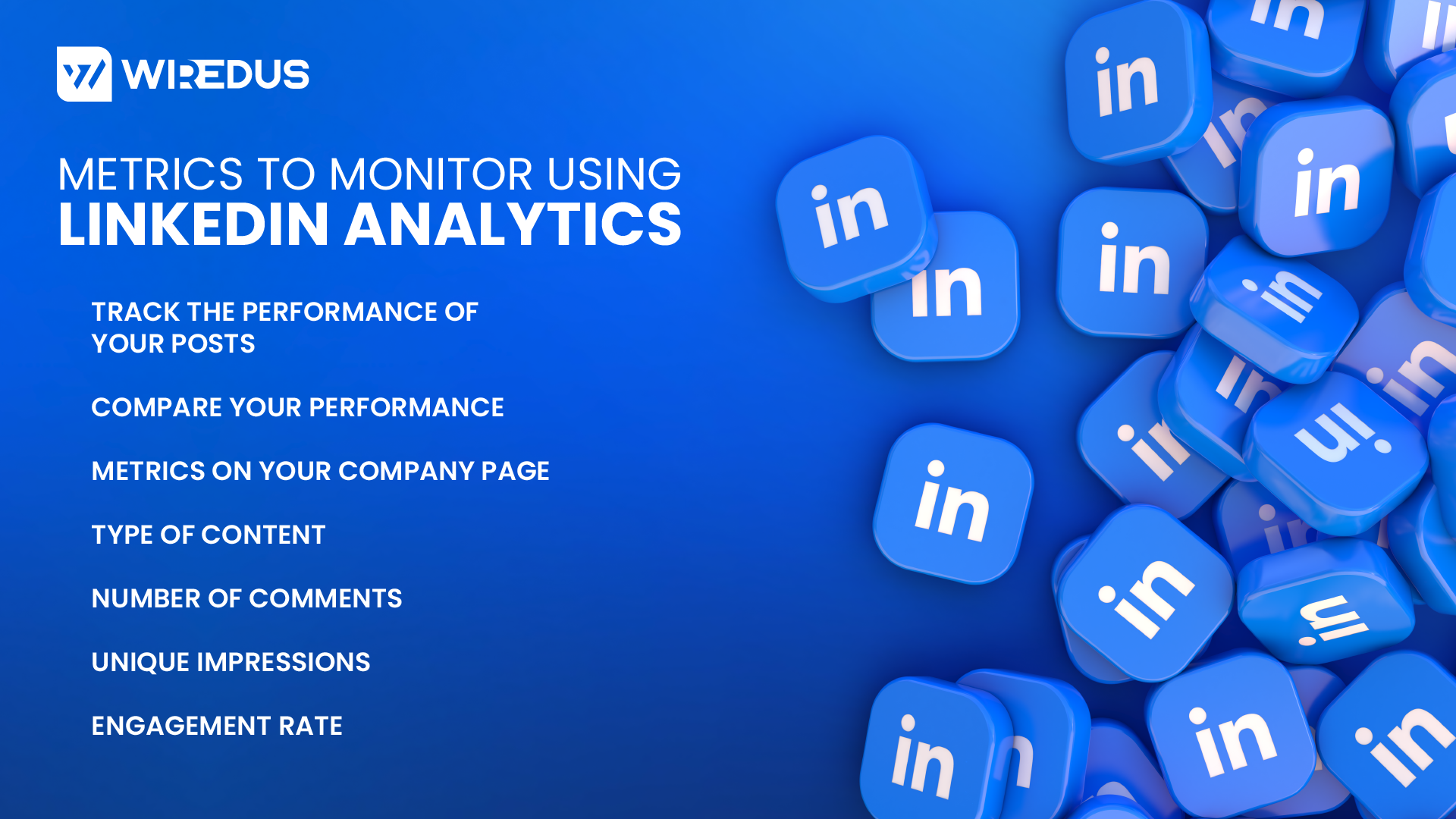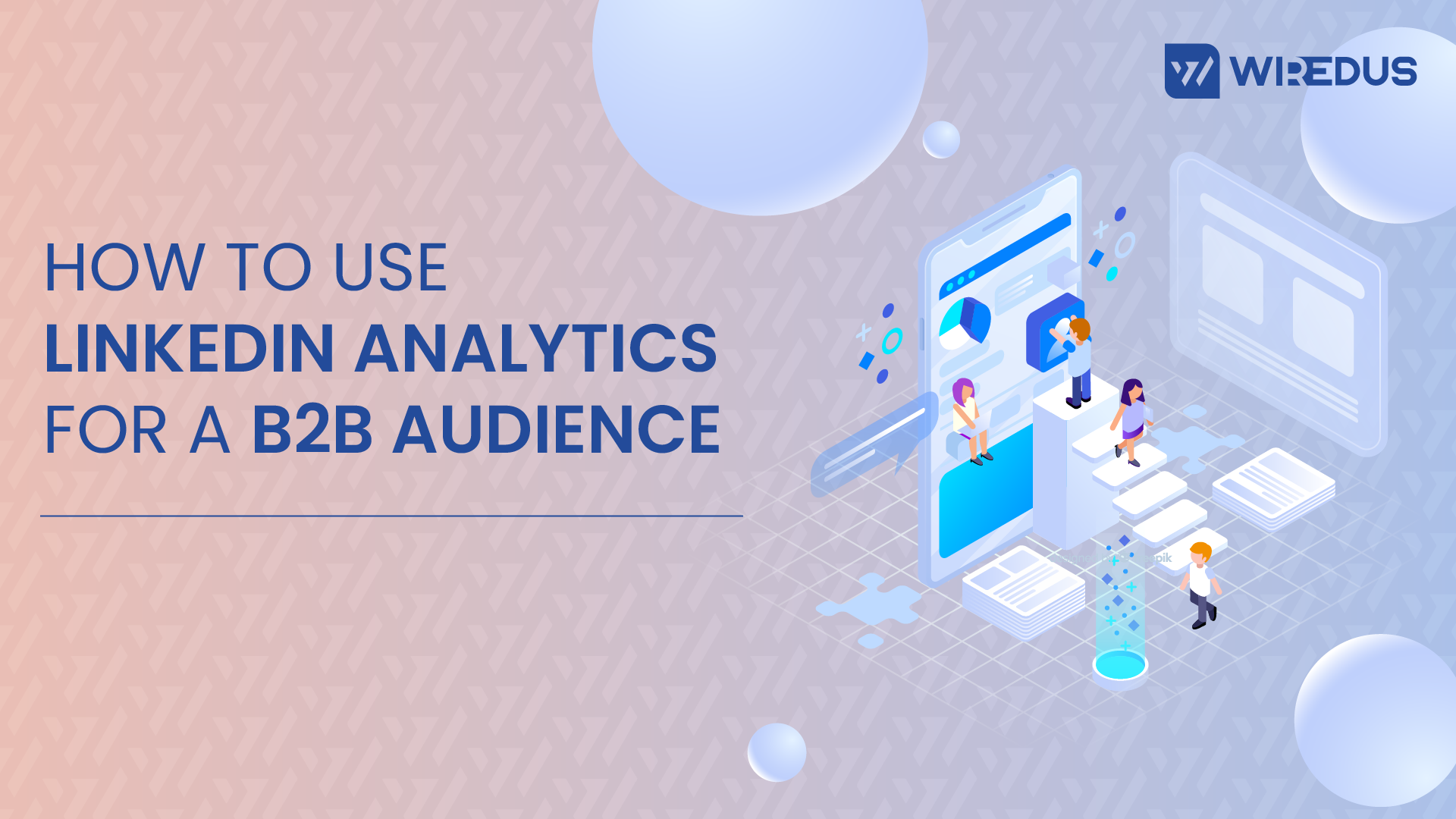In today’s world, businesses are always looking for ways to improve their marketing strategy and boost their online presence. With the rise of social media platforms, LinkedIn has become a valuable tool for B2B businesses to connect with their target audience and potential partners.
However, having a LinkedIn account and posting content is not enough to succeed in B2B marketing. You need to constantly update analytics, track the performance of your posts, and compare your performance to other companies in your industry. That’s where LinkedIn analytics comes in.
Let’s start at the beginning, shall we?
What is LinkedIn Analytics?
LinkedIn Analytics is a feature that allows you to track the performance of your posts, page, and even your LinkedIn account. It provides important metrics that help you compare your performance over time and track the engagement rate of your content.

What makes LinkedIn Analytics a useful marketing tool
One of the key features of LinkedIn Analytics is the ability to track the performance of your posts. You can view the total number of impressions, the number of unique impressions, and the number of clicks each post receives. This data allows you to see which posts are resonating with your audience and which ones aren’t. You can then adjust your content strategy accordingly to increase engagement and improve your overall performance.
Another important metric that LinkedIn Analytics provides is the number of comments on your posts. Comments are a great way to measure engagement and start a conversation with your audience. By analyzing the number of comments on each post, you can determine which types of content are most likely to generate discussion and engagement.
LinkedIn Analytics also allows you to track the performance of your company page. You can view metrics on your company page such as the total number of followers, the number of unique visitors, and the engagement rate. By tracking these important metrics, you can see how your company page is performing over time and make data-driven decisions to improve its effectiveness.
In addition to tracking the performance of your own account and company page, LinkedIn Analytics also allows you to track the performance of other companies. You can choose which companies to track and view their engagement metrics, giving you insights into what’s working for your competitors and how you can improve your own strategy. Thus, by using LinkedIn Analytics, you not only gain insights into your audience’s behavior and preferences, but it also allows you to create more effective content and optimize your social media marketing strategy.
And now that we’ve covered some of the key features of LinkedIn Analytics, let’s talk about how you can use this data to improve your marketing strategy.
To access the analytics dashboard, you need to log into your LinkedIn account and navigate to your company page. Once you’re on your company page, you will see an Analytics tab on the top navigation bar. Click on it, and you will be directed to the analytics dashboard.
This dashboard can then be used to collect & monitor data pertaining to your content to review & improve your overall performance on LinkedIn.
Metrics to monitor using LinkedIn Analytics

Track the performance of your posts
One of the most important metrics to track on LinkedIn Analytics is the performance of your posts. You can see the total number of impressions, clicks, and engagement rate for each post. Unique impressions show you how many individuals have seen your post, while clicks show you how many people have clicked on your post. Engagement rate is a crucial metric that shows you how many people have interacted with your post. Engagement rate includes the number of likes, comments, and shares.
Compare your performance
To see how well your company page is performing, you can compare your performance to other companies in your industry. LinkedIn Analytics allows you to track the performance of up to three competitor companies. You can see how many followers they have, how often they post, and how much engagement their posts receive. This information can help you identify areas where you can improve your social media marketing strategy.
Metrics on your company page
In addition to post performance, LinkedIn Analytics provides valuable insights into your company page. You can see the total number of followers, the number of unique visitors, and the number of times your company page was viewed. You can also see the job function seniority of your followers, which can help you tailor your content to their needs.
Type of content
Another important metric to track is the type of content that performs best on your company page. LinkedIn Analytics allows you to see which posts receive the most engagement, including the number of likes, comments, and shares. You can also see which types of posts perform best, such as images, videos, or text-only posts. This information can help you create content that resonates with your audience and drives engagement.
Number of comments
Comments are a valuable metric to track because they indicate that your audience is actively engaging with your content. LinkedIn Analytics allows you to see the number of comments on each post, as well as the number of unique commenters. You can use this information to identify which posts receive the most engagement and which topics your audience is most interested in.
Unique impressions
Unique impressions are the number of individuals who have seen your post at least once. This metric is important because it shows you how far your content is reaching. If your unique impressions are low, it may indicate that your content is not resonating with your target audience.
Engagement rate
Engagement rate is a crucial metric that shows you how many people are interacting with your content. It includes the number of likes, comments, and shares. A high engagement rate indicates that your content is resonating with your audience and driving engagement.
Conclusion
In conclusion, using LinkedIn Analytics for a B2B audience can help you improve your social media marketing strategy and reach potential customers. By logging into LinkedIn, a career building network, and accessing your LinkedIn account, you can utilize LinkedIn Analytics to track the performance of your posts over a 30-day period. You can see which types of content perform best, including images, videos, or text-only posts, and which companies to track for benchmarking. By updating your analytics regularly and tracking the performance of your posts, you can see which types of content perform best and tailor your content to your audience’s needs. Important metrics to track include unique impressions, engagement rate, and the number of comments on your posts.
Additionally, comparing your performance to other companies in your industry can help you identify areas for improvement and stay competitive. Job function seniority and metrics on your company page can also provide valuable information for targeting your audience and creating content that resonates with them. And if you need further assistance in utilizing LinkedIn Analytics for your business, consider reaching out to a reputable digital marketing agency like Wiredus for expert guidance.

